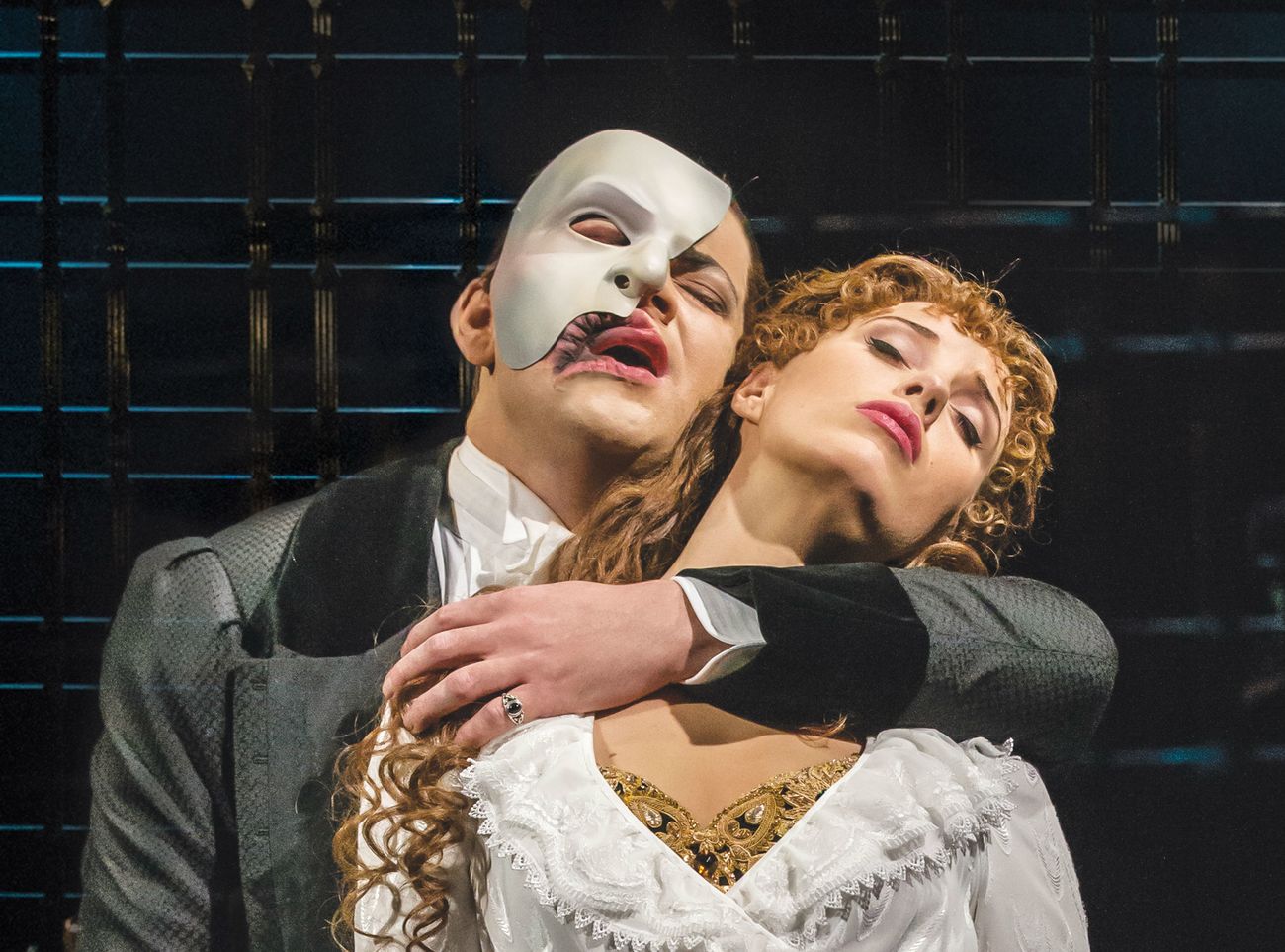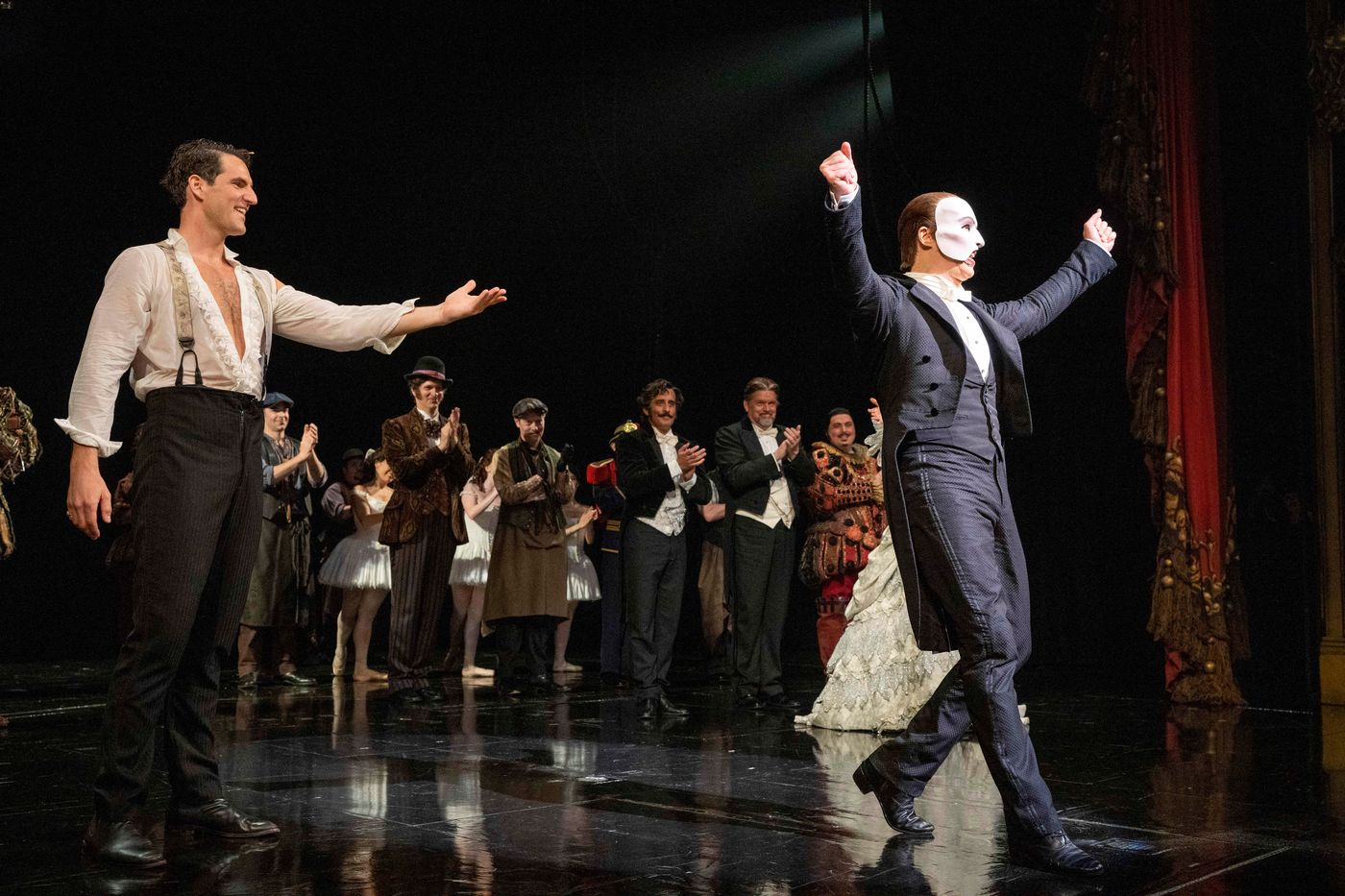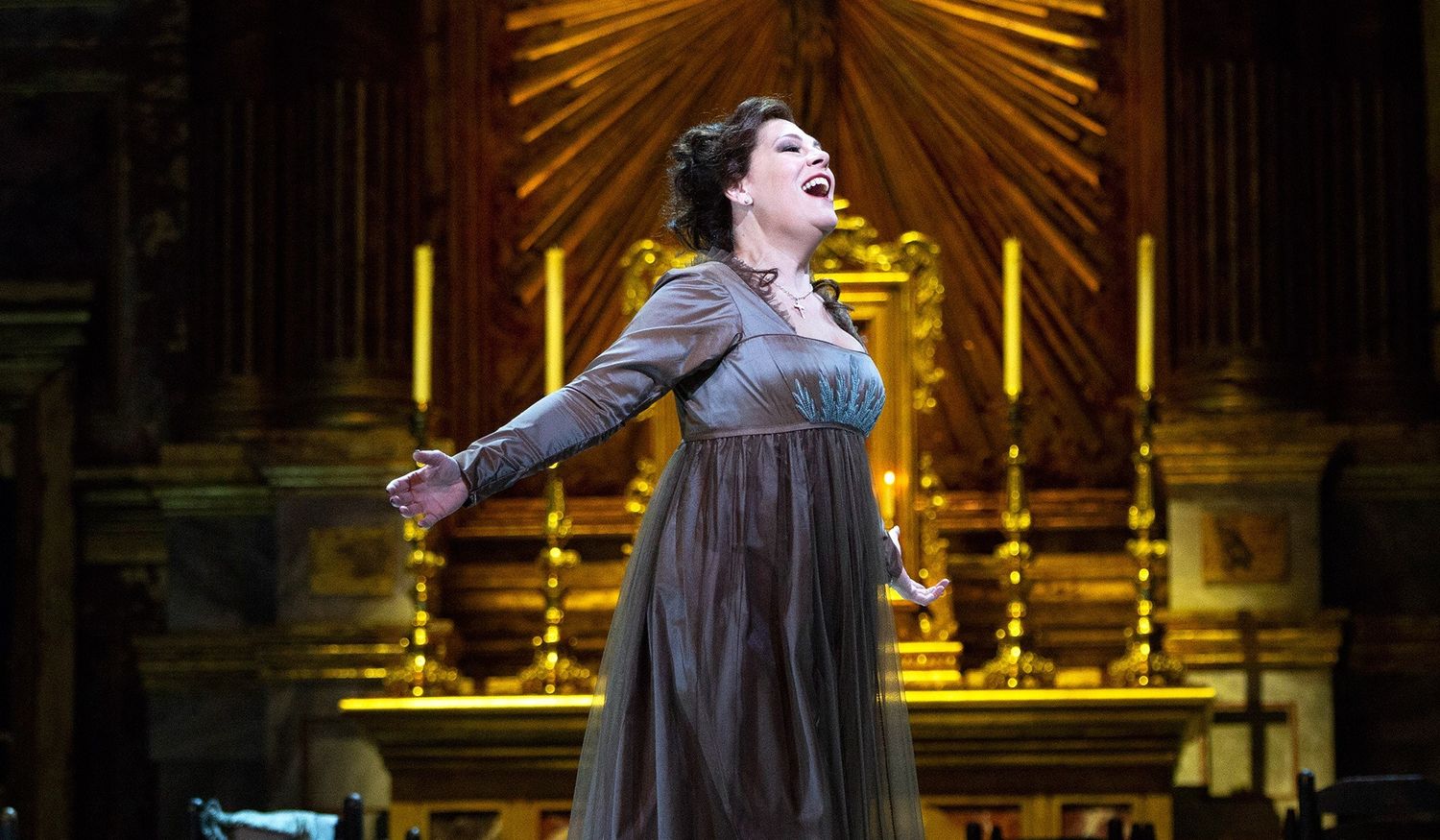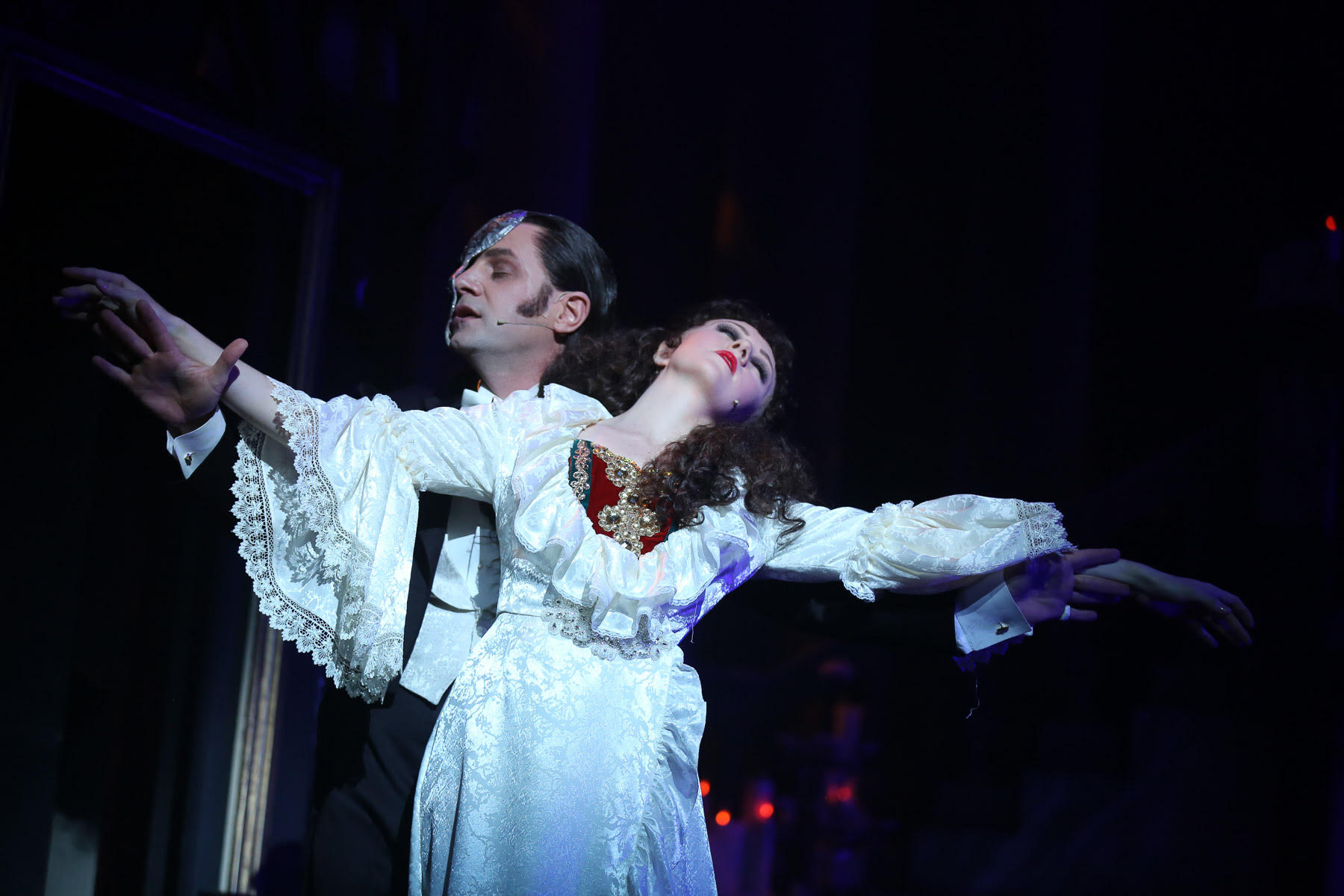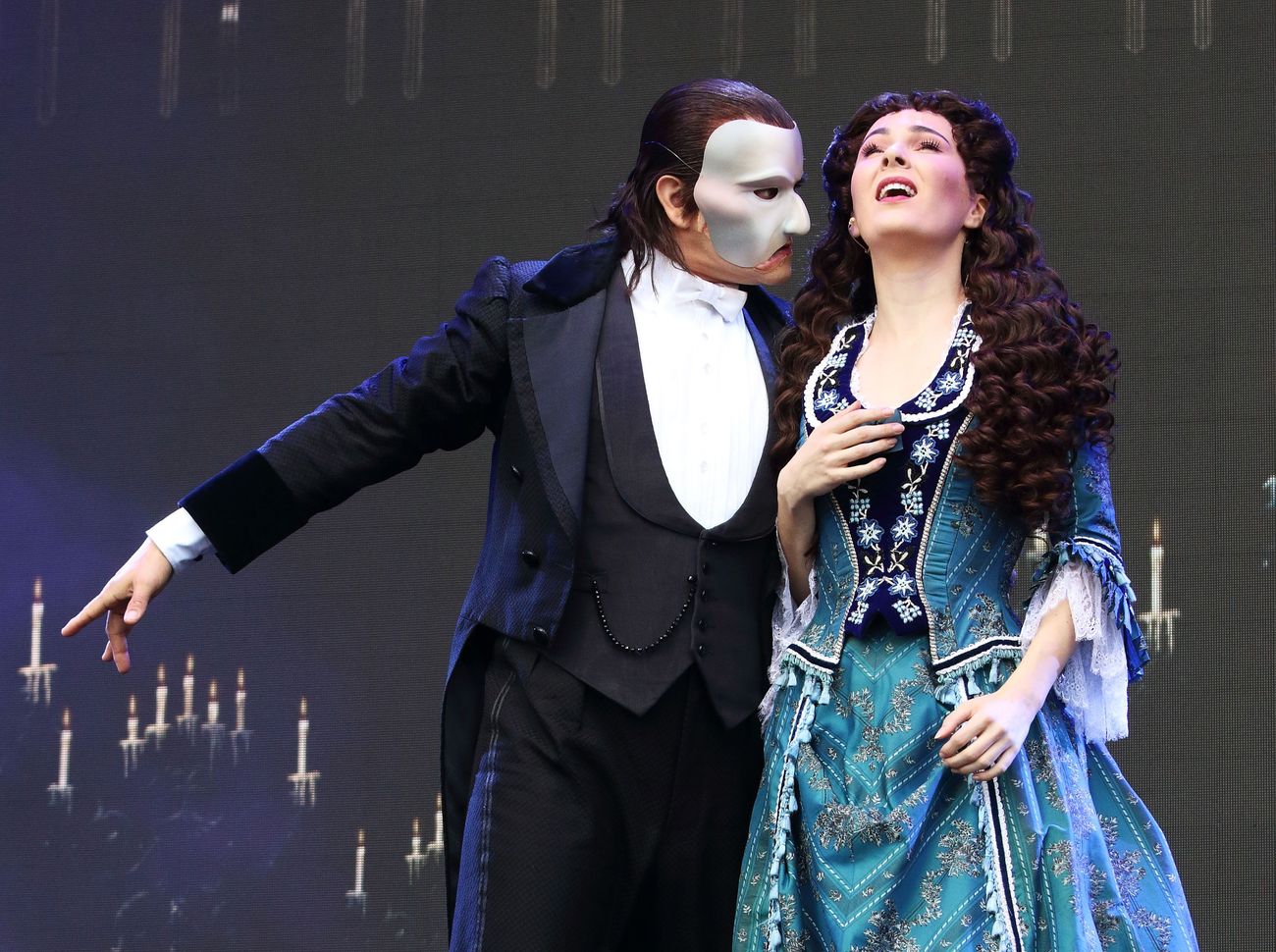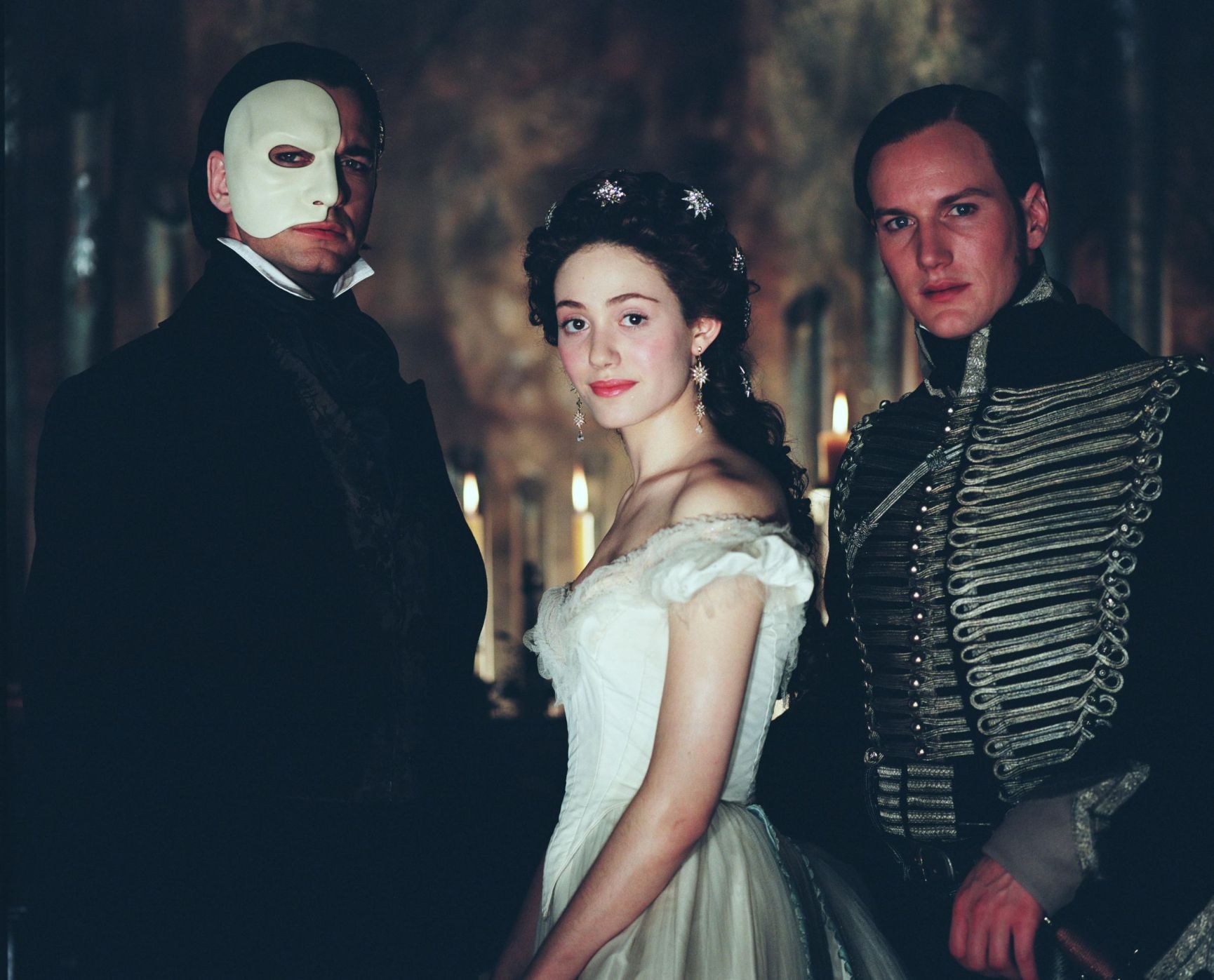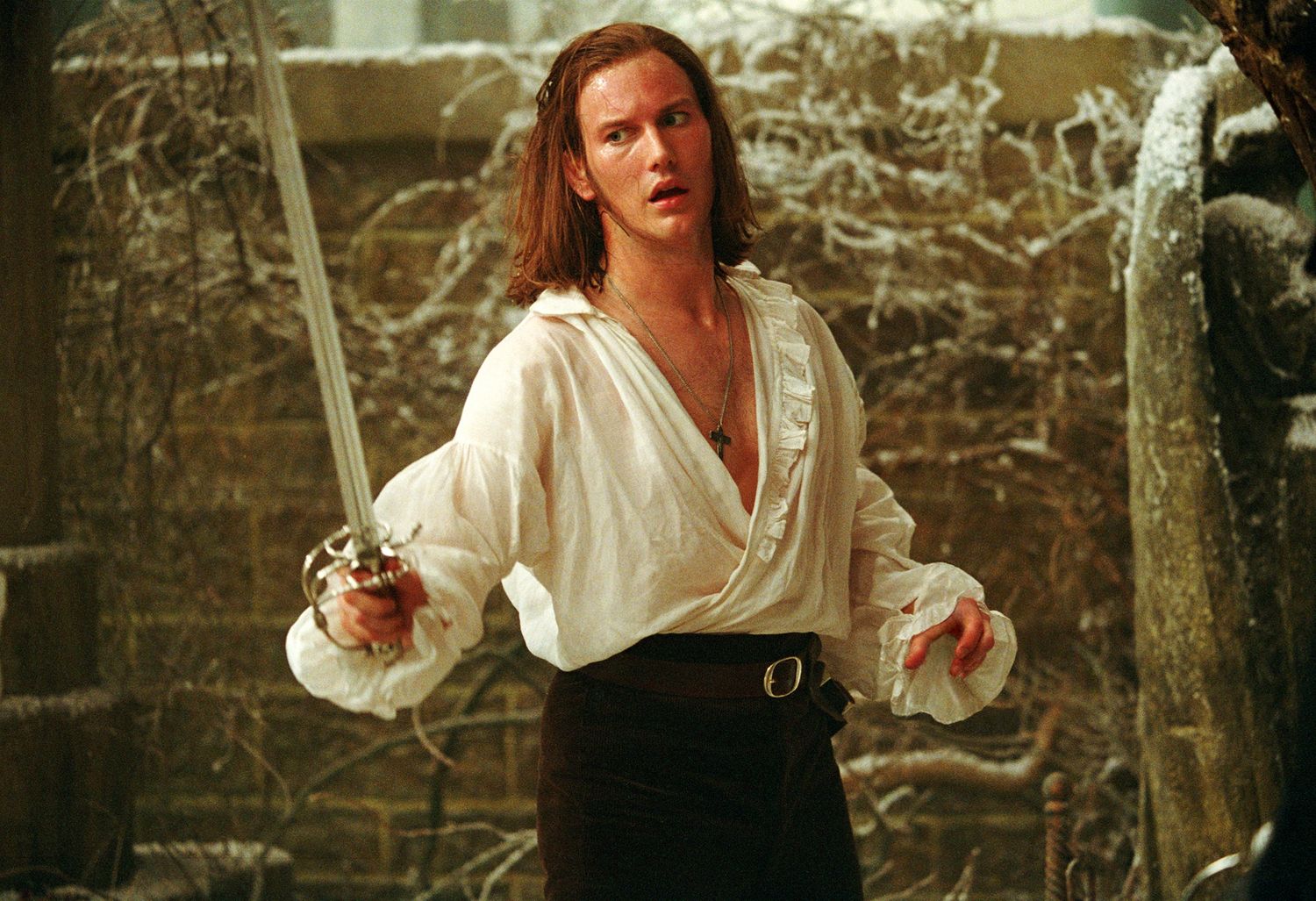Home>Events & Info>Opera>Why Is The Phantom Of The Opera So Popular


Opera
Why Is The Phantom Of The Opera So Popular
Modified: January 22, 2024
Discover why the Phantom of the Opera continues to captivate audiences worldwide. Explore the allure and magic of this beloved opera.
(Many of the links in this article redirect to a specific reviewed product. Your purchase of these products through affiliate links helps to generate commission for AudioLover.com, at no extra cost. Learn more)
Table of Contents
Introduction
The Phantom of the Opera is a timeless masterpiece that has captured the hearts of audiences around the world. With its haunting music, mesmerizing storyline, and stunning production, it has become one of the most popular and enduring theatrical experiences of all time. From its origins in literature to its successful adaptation into a stage musical, The Phantom of the Opera continues to captivate and enchant audiences with its tale of love, passion, and obsession.
First published as a novel by French author Gaston Leroux in 1909, The Phantom of the Opera tells the story of a disfigured musical genius who falls in love with a talented young soprano, Christine Daaé. Set against the backdrop of the Paris Opera House, this tragic love story has been reimagined and brought to life on stage in Andrew Lloyd Webber’s iconic musical adaptation.
The success of The Phantom of the Opera can be attributed to a combination of factors that have resonated with audiences worldwide. Its intriguing storyline, unforgettable characters, breathtaking music, and dazzling production values have all played a part in its enduring popularity. In this article, we will delve into the history, music, characters, sets and costumes, universal themes, cultural impact, and enduring legacy of The Phantom of the Opera.
Whether you are a fan of musical theater or simply curious about the allure of this iconic production, join us as we explore the many reasons behind the incredible popularity and lasting appeal of The Phantom of the Opera.
History of The Phantom of the Opera
The Phantom of the Opera has a rich and fascinating history that dates back over a century. It all began with the publication of Gaston Leroux’s gothic novel in 1909. The novel quickly gained popularity for its suspenseful plot and mysterious protagonist, the Phantom.
Soon after its release, The Phantom of the Opera caught the attention of the entertainment world. In 1925, a silent film adaptation starring Lon Chaney as the Phantom was released, becoming a critical and commercial success. The film’s portrayal of the disfigured and tormented Phantom left a lasting impression on audiences, solidifying the character’s place in popular culture.
However, it was in 1986 that The Phantom of the Opera truly became a global phenomenon. Andrew Lloyd Webber, renowned for his musical compositions, created a stage adaptation of the novel, with lyrics by Charles Hart and Richard Stilgoe. The musical premiered at Her Majesty’s Theatre in London’s West End and received instant acclaim. Its success led to a Broadway production in 1988, further cementing its status as a theatrical sensation.
Over the years, The Phantom of the Opera has become the longest-running musical in Broadway history, surpassing an impressive 13,000 performances. Additionally, it has been performed in numerous countries and languages, captivating audiences worldwide.
What sets The Phantom of the Opera apart from other musicals is its ability to combine elements of romance, suspense, and tragedy, all while showcasing breathtaking music and production values. It has become a staple of musical theater, leaving an indelible mark on the industry.
It is also worth noting that The Phantom of the Opera has inspired various adaptations and spin-offs, including films, sequels, and a Las Vegas spectacle. This speaks to its enduring popularity and the timeless appeal of its characters and story.
Today, The Phantom of the Opera continues to enchant audiences as it continues its record-breaking run on Broadway and productions worldwide. Its captivating tale of love, passion, and music resonates with people of all ages and backgrounds, ensuring its place in the annals of theatrical history.
The Storyline
The Phantom of the Opera tells a captivating story of love, obsession, and tragedy set in the grandeur of the Paris Opera House. The plot revolves around the mysterious Phantom, a disfigured musical genius who haunts the opera house’s catacombs and falls in love with the beautiful young soprano, Christine Daaé.
Christine, an aspiring singer, is mentored and guided by the enigmatic Phantom, who disguises himself as the Angel of Music. He provides her with vocal training and helps her secure lead roles in the opera productions. However, Christine is also pursued by her childhood friend, Raoul, the Vicomte de Chagny.
As the story unfolds, the Phantom’s obsession with Christine becomes increasingly dangerous and possessive. He resorts to manipulation, sabotage, and murder to ensure her devotion. The love triangle between Christine, the Phantom, and Raoul intensifies, leading to a dramatic climax.
The second act of the musical reveals more about the Phantom’s tragic past, explaining his physical deformity and isolation from society. It also explores Christine’s struggle to confront her feelings for both the Phantom and Raoul.
Throughout the show, the audience is enthralled by the Phantom’s dark charisma, Christine’s internal conflict, and the emotional turmoil of their forbidden love. The story combines elements of romance, suspense, and tragedy, creating a powerful and unforgettable experience.
Ultimately, The Phantom of the Opera explores themes of identity, unrequited love, and the consequences of obsession. It delves into the complexities of human emotions through its compelling characters and their heart-wrenching journey.
The intertwining of passionate music, dramatic storytelling, and the grandeur of the Paris Opera House sets the stage for an immersive and awe-inspiring theatrical experience. The storyline of The Phantom of the Opera has captivated audiences for over three decades, leaving a lasting impression on all who witness its hauntingly beautiful tale.
The Music
One of the key factors that elevates The Phantom of the Opera to legendary status is its breathtaking and emotionally charged music. Composed by the renowned Andrew Lloyd Webber, the musical’s score is a masterpiece that weaves its way into the hearts of listeners.
The music of The Phantom of the Opera is a beautiful fusion of operatic grandeur, haunting melodies, and powerful ballads. From the iconic overture to the haunting strains of “The Music of the Night” and the heart-wrenching duets between the Phantom and Christine, the score encapsulates the emotions and themes of the story in a way that is both captivating and unforgettable.
Webber’s masterful composition seamlessly blends different musical styles, incorporating operatic elements, classical influences, and contemporary theater sounds. This creates a unique blend that heightens the drama and intensity of the storyline, bringing the characters’ emotions to life.
One of the standout features of the music in The Phantom of the Opera is its ability to evoke a wide range of emotions. The soaring melodies and powerful vocals transport listeners to the opulence of the Paris Opera House, while the tender moments capture the vulnerability and longing of the characters.
The use of recurring musical motifs throughout the show adds depth and continuity to the storytelling. The familiar melodies that reappear in different songs create a sense of connection and anticipation, reminding the audience of the underlying themes and relationships.
In addition to its captivating melodies, The Phantom of the Opera features powerful and evocative lyrics. Charles Hart and Richard Stilgoe’s poetic and heartfelt words add an extra layer of emotion and storytelling to the music, enhancing the overall impact of the songs.
The music of The Phantom of the Opera has had a profound impact on both the musical theater industry and popular culture. Many of the show’s songs have become iconic, recognized and loved by people around the world. The enduring popularity of the soundtrack, which has sold millions of copies worldwide, is a testament to the timeless appeal of its music.
Whether experienced live in the theater or enjoyed through recordings, the music of The Phantom of the Opera has the power to transport and move audiences. It is a testament to the incredible talent of Andrew Lloyd Webber and the lasting impact of his unforgettable compositions.
The Characters
The characters in The Phantom of the Opera are integral to the story’s success, each playing a crucial role in bringing the narrative to life. From the iconic Phantom to the talented Christine and the charismatic Raoul, each character contributes to the complex and emotional journey that unfolds on stage.
The Phantom, also known as Erik, is the enigmatic and tragic figure at the center of the story. His disfigurement and isolation from society have fueled his obsession with music and driven him to take refuge in the catacombs beneath the Paris Opera House. Despite his dark deeds, the Phantom elicits sympathy from the audience, as his longing for love and acceptance is palpable.
Christine Daaé, the young Parisian soprano, is the object of the Phantom’s love and obsession. As she navigates her rise to stardom, Christine grapples with conflicting feelings for both the Phantom and her childhood friend, Raoul. Her vulnerability, talent, and inner strength make her a compelling and relatable character.
Raoul, the Vicomte de Chagny, represents the romantic and noble counterpart to the Phantom. While the Phantom embodies darkness and obsession, Raoul brings light and love to Christine’s life. As they rekindle their childhood connection, Raoul becomes a symbol of hope and the possibility of a brighter future.
In addition to the main trio, The Phantom of the Opera features a supporting cast of memorable characters. Madame Giry, the ballet mistress, serves as a mysterious and knowledgeable guide to the secrets of the opera house. Carlotta, the prima donna, adds a touch of diva-like drama and comic relief. The interactions and dynamics between these characters further enrich the storyline and offer additional layers of intrigue.
What makes the characters in The Phantom of the Opera so compelling is their depth and complexity. Each one is driven by their own desires, fears, and vulnerabilities, making them relatable and multidimensional. The audience becomes emotionally invested in their journeys, experiencing their triumphs and heartbreaks as if they were their own.
It is the combination of the well-developed characters, their relationships, and their individual journeys that creates a rich tapestry of storytelling in The Phantom of the Opera. The audience is not only entertained but also given the opportunity to reflect on the universal themes of love, redemption, and the power of music.
The Spectacular Sets and Costumes
One of the distinguishing features of The Phantom of the Opera is its lavish and visually stunning sets and costumes. From the opulent interiors of the Paris Opera House to the haunting underground lair of the Phantom, the production design transports audiences to the heart of 19th-century Paris and immerses them in a world of grandeur and mystery.
The sets of The Phantom of the Opera are a work of art in themselves. The production utilizes intricate and detailed backdrops, props, and stage machinery to create a sense of depth and realism. The iconic chandelier, the sweeping staircase, and the majestic opera house scenes all contribute to the overall ambiance of the show.
The attention to detail in the sets is remarkable. From the ornate and extravagant opera boxes to the eerie catacombs, every element is meticulously crafted to transport the audience into the world of the story. The seamless transitions between the different settings create a fluid and immersive experience, enhancing the storytelling.
Equally impressive are the costumes in The Phantom of the Opera. From Christine’s elegant gowns to the Phantom’s iconic black cape and mask, the costumes contribute to the visual spectacle of the show. The intricate designs, rich fabrics, and meticulous craftsmanship reflect the Victorian era and the decadence of the opera world.
The Phantom’s costume, in particular, is instantly recognizable and has become a symbol of the character’s mysterious and tragic persona. It adds an element of intrigue and visually captures the character’s essence.
The use of color also plays a significant role in the costume design. The vibrant and luxurious costumes worn by the opera company members contrast with the darker, more subtle tones of the Phantom’s ensemble, creating a visual distinction between the different worlds within the story.
Together, the sets and costumes of The Phantom of the Opera contribute to the overall immersive experience of the show. They enhance the storytelling, create a sense of time and place, and elevate the visual impact of the production. The grandeur and attention to detail in the production design add to the magic and allure of the show.
Attending a performance of The Phantom of the Opera is a feast for the eyes, as audiences are treated to a visual spectacle that transports them to a bygone era. The sets and costumes not only enhance the performances of the actors but also become characters in their own right, adding to the overall enchantment and theatricality of the production.
The Universal Themes
The Phantom of the Opera explores a variety of universal themes that resonate with audiences of all backgrounds. These themes delve into the depths of human emotions, shedding light on the complexities of love, obsession, identity, and redemption.
Love is a central theme in the show, evoking both heartache and passion. The Phantom’s unrequited love for Christine, Raoul’s unwavering devotion to her, and Christine’s struggle to navigate her conflicting feelings are all poignantly depicted. The exploration of love in The Phantom of the Opera showcases the power it has to both uplift and destroy.
Obsession is another theme that drives the storyline. The Phantom’s intense fixation on Christine consumes him, leading him to commit desperate acts to possess her. This theme highlights the destructive nature of obsession and the lengths to which it can drive individuals.
Identity and self-acceptance are also prominent themes in The Phantom of the Opera. The Phantom’s physical deformity and subsequent hiding of his true self underscore the challenges of finding acceptance in a society that often judges based on appearance. Christine’s journey to embrace her own talents and assert her independence further explores the theme of identity.
Redemption is a recurring theme throughout the story. The characters are confronted with their own flaws and are given the opportunity to seek forgiveness and redemption. This theme reminds audiences of the power of forgiveness and the potential for personal growth and transformation.
The universal themes presented in The Phantom of the Opera transcend time and place, allowing audiences to connect with the story on a deeply emotional level. They resonate with our own experiences and struggles, touching on fundamental aspects of the human condition.
Whether it is the yearning for love and acceptance, the destructive nature of obsession, the search for identity, or the redemption of one’s past, these themes in The Phantom of the Opera strike a chord with audiences, eliciting a range of emotions and provoking introspection.
By exploring these universal themes, The Phantom of the Opera offers not only entertainment but also a profound and thought-provoking experience. It reminds us of our shared humanity and the timeless struggles and triumphs that connect us all.
Cultural Impact
The cultural impact of The Phantom of the Opera cannot be overstated. Since its premiere, the musical has left an indelible mark on the world of theater and popular culture, becoming a global phenomenon that has captivated audiences across generations.
One of the ways The Phantom of the Opera has made a cultural impact is through its record-breaking longevity on both Broadway and the West End. Its continuous run and countless productions worldwide have introduced millions of people to the magic of musical theater, fostering a love and appreciation for the art form.
The show’s iconic music has become ingrained in popular culture. Songs like “The Music of the Night,” “All I Ask of You,” and “Think of Me” have transcended the theater, reaching audiences far beyond the confines of the stage. These beloved songs have been covered by various artists, featured in films and television shows, and have become part of the collective musical lexicon.
In addition, the Phantom’s distinctive mask has become an iconic symbol associated with mystery and intrigue. It has been imitated and referenced in countless films, television shows, and media, further contributing to the cultural impact of the musical.
Furthermore, The Phantom of the Opera has inspired a devoted fan base that spans the globe. Fans, known as “Phans,” organize events, fan clubs, and online communities to celebrate and discuss the musical. The longevity and continued popularity of The Phantom of the Opera are a testament to the lasting impression it has made on its audience.
Beyond its immediate impact, The Phantom of the Opera has had a profound influence on the theater industry as a whole. It paved the way for the development of other mega-musicals, with its grand scale, innovative set designs, and unforgettable scores. Its success has inspired numerous productions and adaptations worldwide, propelling the growth and diversification of musical theater.
The enduring success of The Phantom of the Opera speaks to its ability to resonate with audiences from different cultures and backgrounds. While the story is set in 19th-century Paris, its universal themes and emotionally charged moments transcend time and place, making it relatable to audiences around the world.
Ultimately, The Phantom of the Opera has left an indelible mark on the cultural landscape, influencing theater, music, and popular culture. Its legacy continues to thrive, captivating new generations and ensuring its place as one of the most iconic and beloved musicals of all time.
The Enduring Legacy
The Phantom of the Opera has left an enduring legacy that stretches far beyond its initial debut. The musical has become a cultural institution, captivating audiences for over three decades and solidifying its place as one of the most beloved and successful theatrical productions of all time.
One of the key factors contributing to its enduring legacy is its record-breaking longevity on both Broadway and the West End. The Phantom of the Opera continues to draw crowds night after night, captivating new generations and delighting loyal fans who return to experience its magic time and time again.
Its longevity is a testament to the timeless appeal of its storytelling, music, and characters. The themes of love, obsession, and redemption resonate with audiences from all walks of life, allowing the show to transcend time and maintain its popularity over the years.
The Phantom of the Opera has also made a significant impact on the careers of countless actors, singers, and theater professionals. The opportunity to be a part of this iconic production is regarded as a pinnacle achievement for many performers. The show has helped launch careers and provided a platform for talent to shine.
The influence of The Phantom of the Opera extends beyond the stage as well. It has inspired adaptations in various forms of media, including film, television, and literature. The beauty of its music, the tragic love story, and the haunting character of the Phantom have become a source of inspiration for artists and creators in their own works.
Moreover, The Phantom of the Opera has had a significant economic impact on the theater industry. It has generated billions of dollars in ticket sales and merchandise, creating employment opportunities and stimulating local economies in the cities where it is performed. The success of the show has paved the way for other blockbuster musicals and contributed to the overall growth and development of the industry.
Perhaps the most powerful aspect of The Phantom of the Opera’s enduring legacy is its ability to touch the hearts and souls of its audience members. With its timeless themes, mesmerizing music, and captivating performances, the show continues to evoke deep emotions and elicit powerful reactions from those who experience it.
Whether a first-time viewer or a devoted fan, The Phantom of the Opera leaves an unforgettable impression. It sparks imagination, ignites passion for the arts, and creates lasting memories for all those who have had the privilege of witnessing its magic.
As The Phantom of the Opera continues to inspire and captivate audiences worldwide, its enduring legacy is a testament to the power of storytelling, the beauty of music, and the transformative nature of the theater.
Conclusion
The Phantom of the Opera stands as a testament to the timeless power of storytelling, the beauty of music, and the enchantment of the theater. From its origins as a novel to its iconic stage adaptation, the production has captivated audiences and solidified its place as one of the most popular and enduring theatrical experiences of all time.
Throughout its rich history, The Phantom of the Opera has left an indelible mark on the cultural landscape. Its haunting music, mesmerizing storyline, and stunning production values have become the stuff of legend, captivating audiences from all corners of the globe.
The show’s enduring popularity can be attributed to its universal themes of love, obsession, identity, and redemption, which resonate with people of all backgrounds. Its characters have become iconic, and its music has become a part of the collective musical lexicon.
Furthermore, The Phantom of the Opera has not only influenced the theater industry but also permeated popular culture. Its impact can be felt in films, television shows, and even everyday references to the character of the Phantom and his iconic mask.
What sets The Phantom of the Opera apart is its ability to transport audiences into a world of grandeur and mystique. The spectacular sets and costumes, combined with the powerful performances and emotionally charged music, create an immersive and unforgettable experience.
As the show continues to captivate audiences with its spellbinding tale, it leaves an enduring legacy. Its record-breaking longevity, devoted fan base, and profound cultural impact are a testament to its status as a masterpiece of the stage.
Whether it’s your first time experiencing The Phantom of the Opera or you’re returning for another mesmerizing performance, the allure of this timeless production remains as captivating as ever. The enduring allure of The Phantom of the Opera proves that its magic will continue to enthrall audiences for many years to come.

